The NOISE Analysis
Having a solid strategic plan will allow your company and team to flourish.
You must have a format and process that is effective.
DOWNLOAD pdf of NOISE analysis = CLICK
NOISE Analysis
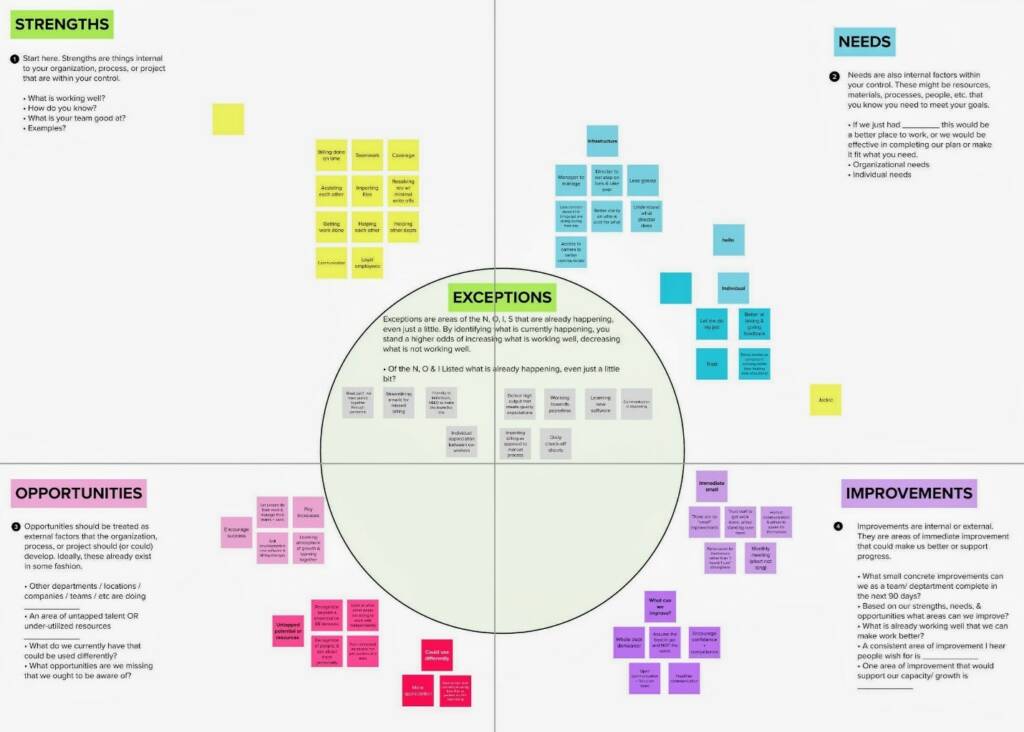
Working with companies developing strategic plans, everyone seems to feel that the default method is a SWOT analysis of strengths, weaknesses, opportunities, and threats. I’ve never been a fan and wondered if there was an alternative.
In the ‘High-Performance Team Building’ class, a friend Brian Pagkos shared an idea of ‘SNOT Analysis’ strengths, needs, opportunities, and threats.
While preparing for a focus group meeting, it came to me NOISE
- Needs
- Opportunities
- Improvements
- Strengths
- Exceptions
A method that uses solution-focused language and can build upon the teams existing knowledge and goals.
Objective
- Determining what we want to have happen and understanding the roadblocks are necessary when planning.
- Developing knowledge plus skills to navigate the plan allows us to choose focus points & what to eliminate.
- The NOISE analysis is a planning technique of looking at what works and determining improvement areas.
- It gives us a format to explore opportunities we may know about or miss.
- When we understand the NOISE conditions, we can create a path toward the future that allows the company, team, or project to flourish.
Materials
- Flip Chart Paper
- Markers
- Lots of Post-it Notes
Group Size
- 5 to 20
- I’ve led this with larger teams; you can break the group into teams of 6 or fewer. Each team of 6 works independently and then gets together to share (or the facilitator finds commonalities & categorizes them) OR leads a series of focus groups with smaller teams separately.
Time Frame
- At least 2 hours, I have led this over multiple days.
Guidelines
1. Before the meeting, it may be helpful to decide on a goal (what-by-when) to be achieved or send some pre-work to the participants to help create a framework for the NOISE.
2. Draw a circle in the middle on a flip chart paper. Create four quadrants radiating from the center circle. See below.
While drawing the NOISE analysis chart, explain what would be helpful information in each area. Feel free to change the bullets to match your needs better.
In the center circle, write “Exceptions“
- Of the N, O & I listed, what is already happening, even just a little bit?
Strengths
In the upper left quadrant, write “Strengths”
- What is working well?
- How do you know?
- What is your team good at?
- Examples?
Needs
In the upper right quadrant, write “Needs”
- If we had ________, this would be a better place to work, or we would be effective in completing our plan or make it fit what you need.
- Organizational needs
- Individual needs
Opportunities
In the lower left quadrant, write “Opportunities”
- Other departments/locations/companies/teams / etc. are doing ____________
- An area of untapped talent OR under-utilized resources ____________
- What do we currently have that we can use differently?
In the lower right quadrant, write “Improvements“
- Miracle Question: You leave here today and go to sleep. While you are sleeping, a miracle happens, and what you need to be more effective with your work happens, but you don’t know because you were asleep. You arrive tomorrow; what is the 1st thing you notice that makes you realize this has happened? How would you know?
- Scaling Question: Currently, the department, organization, and team (choose appropriate) operates at X; what does X + 2 look like?
- 1—2—3—4—5—6—7—8—9—10
- List all the things we can accomplish in the next 30 – 90 days (the more specific, the better)
NOISE Analysis Chart
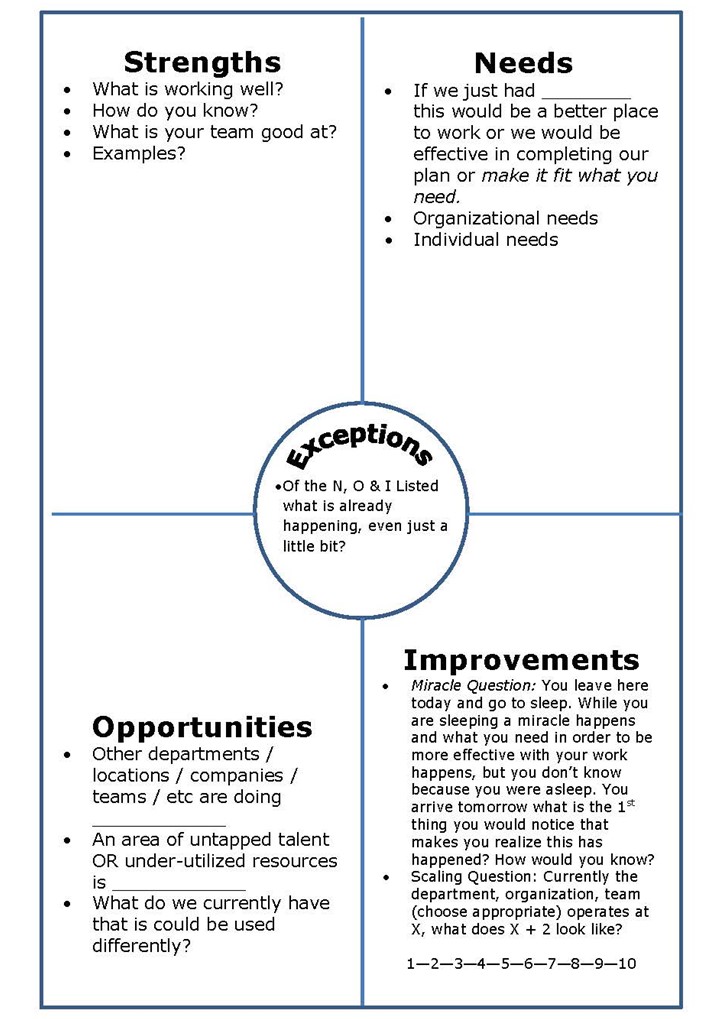
3. After illustrating and sharing the format with the group, ask them to grab flipchart papers, markers, and Post-it notes. Take about 45 minutes to 1 hour as a team to complete as many responses to the NOISE analysis as possible. PLEASE ask people to share; this is a brainstorming-planning time. We will evaluate the ideas later; we are currently looking for quantity.
3a. If you feel people will be too judgmental.
- Ask them to work individually for about 10 minutes (more or less), filling out post-it notes on each area. Start with Strengths, then progress to Needs, Opportunities, and Improvements, and end with Exceptions.
- After people have had a chance to think and work independently, ask them to share their responses (post-it notes) on the NOISE areas.
4. With the team, go through the NOISE areas. Starting with Strengths, sort the ideas in common affinity groups, finding clusters of ideas that may fit together. Take the ideas that may be outliers and recognize that they may be breakthrough ideas.
At this stage, smaller teams of 6 or fewer are necessary; this way, any confusion over the ideas can be explained by the person that had the idea. Plus, the team is small enough to discuss what belongs together and what may be outliers.
Repeat the process in each NOISE area in this order: Needs, Opportunities, Improvements, and end with Exceptions.
5. Once you sort and cluster into common areas, the team will look for broad categories for each small cluster. For example, ‘Communication between sales and production’ or ‘More knowledge of using our internal knowledge management system.’ As the group reaches agreement on the broad categories, re-write these in the proper NOISE areas.
6. Now that everyone feels comfortable with the general categories, re-write them in each NOISE area and ask the team to dot vote on which they think are most relevant based upon the purposes of our planning time.
7. We have broad categories and ideas on focusing and improving them…The following steps would be to take the general categories and ask the team to develop some short-term measurements/milestones to show progress and achievement in the categories.
NOISE analysis action questions
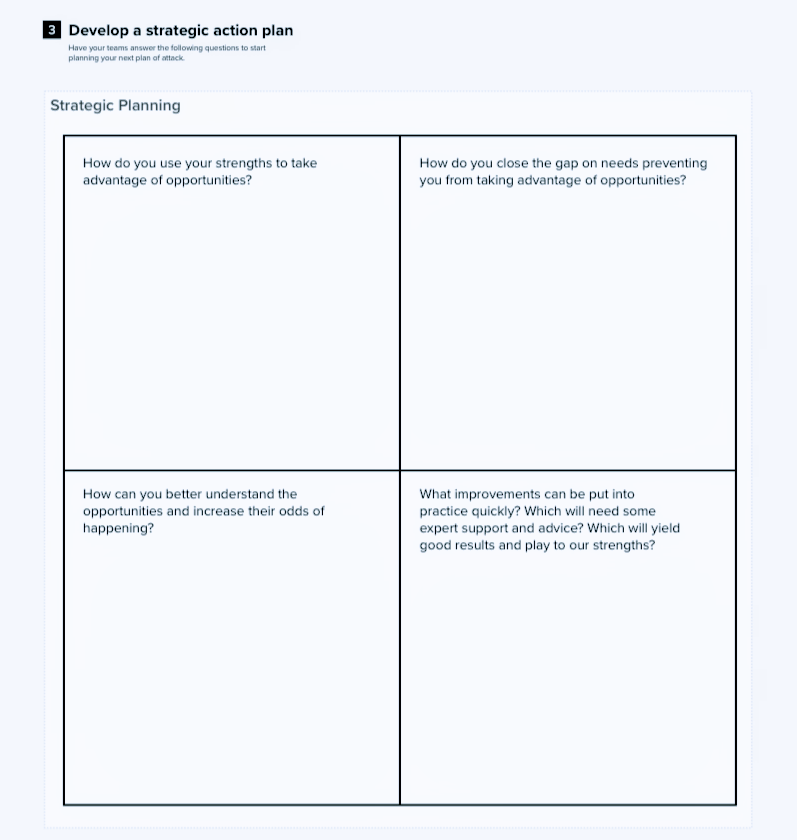
8. Management (or the team leader) gathers all the broad categories and short team measurements/milestones for success and types them up in a ‘Plan Document,’ sharing them with the team, ensuring they are all in agreement.
9. Consider all feedback and changes made. This Plan Document and all the great ideas are now your improvement or strategic plan.
10. Routinely return to the Plan Document and check for relevancy & success, and plan to deal with + correct setbacks.
NOISE analysis blank template
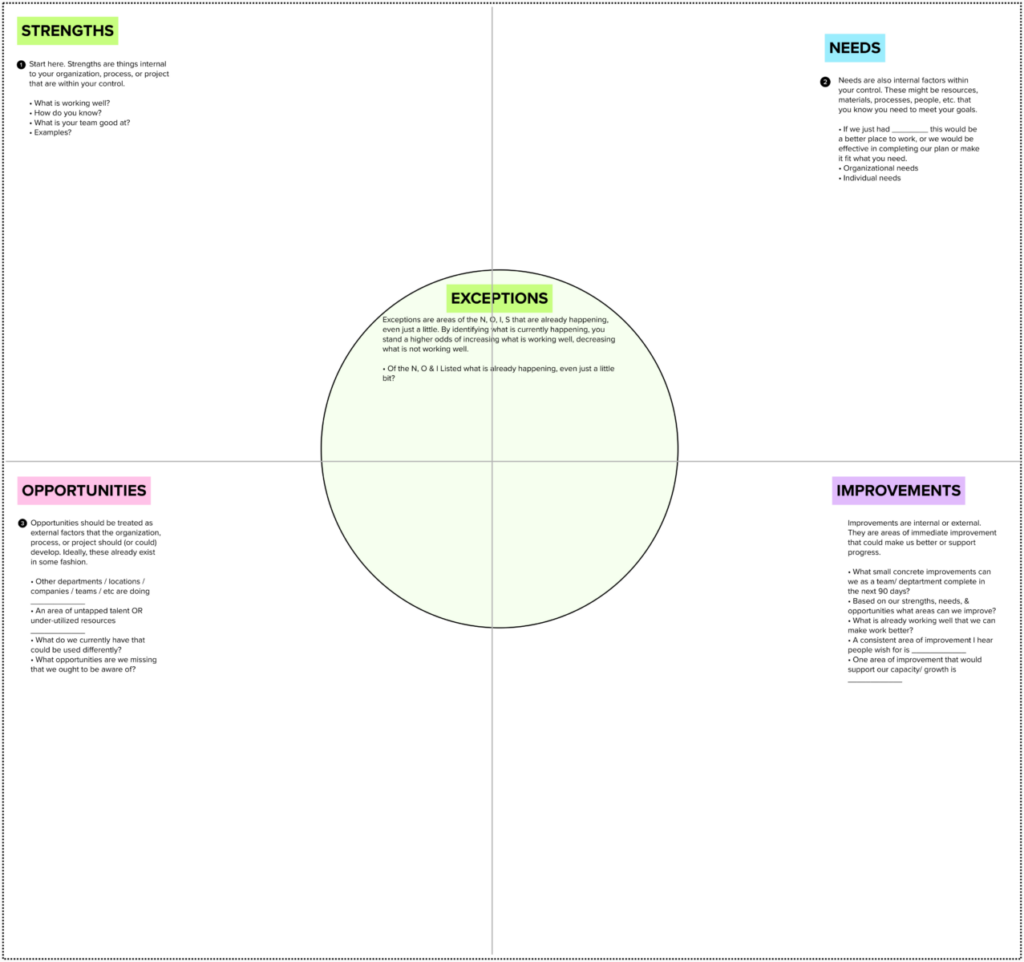
Solution-focused NOISE analysis questions
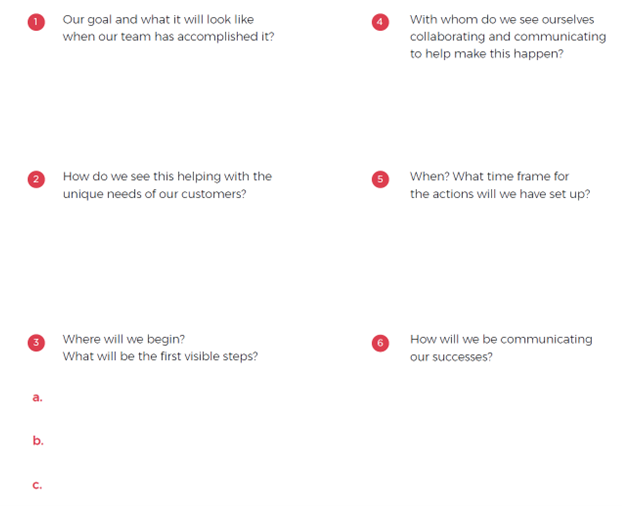
Mike is an experienced managerial leadership and organization development practitioner with over 15 years of expertise; he specializes in maturing organizations through evidence-based practices that promote long-term sustainability and increased value for stakeholders and customers.
Mike’s track record includes a history of achieving double-digit percentage gains in engagement, satisfaction, retention, and work quality through targeted interventions that foster trust, unified cultures, and high-performance teams. He is an expert in using complexity-thinking, human-centered design, and people strategies to align cultures and values, spur positive change, optimize the human experience, promote collaborative problem-solving, and drive ongoing learning and career development… Learn more about Mike
Of course, feel free to use it and get in touch if you have any questions.

